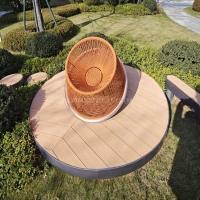Welcome to the website for landscape facilities products and knowledge.
How does polyethylene’s resistance to sand abrasion suit desert sculptures?
Polyethylene’s exceptional resistance to sand abrasion makes it a standout material for desert sculptures, where harsh environmental conditions demand durability. Unlike traditional materials like wood or metal, polyethylene does not degrade quickly under the relentless assault of wind-driven sand. Its high molecular density and flexibility allow it to absorb impacts without cracking or eroding, ensuring sculptures remain intact for years.
In desert regions, temperature fluctuations and UV exposure further test materials. Polyethylene’s UV-stabilized variants resist fading and brittleness, maintaining structural integrity. Artists favor it for large-scale installations because it is lightweight yet robust, simplifying transport and installation in remote areas.
Moreover, polyethylene’s moldability enables intricate designs, capturing fine details that withstand abrasive forces. This adaptability, combined with low maintenance requirements, makes it a cost-effective choice for public art in arid climates. As sustainability gains importance, recycled polyethylene offers an eco-friendly option, aligning with modern environmental standards.
By leveraging polyethylene’s unique properties, desert sculptures achieve longevity and aesthetic appeal, transforming barren landscapes into enduring artistic statements.
Related search:

Recommendation
Swivel chair-Specialty steel structure woven rattan leisure chair with rotatable design